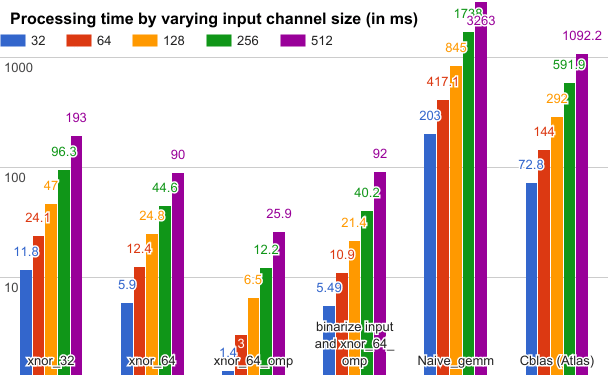AWS Machine Learning Blog
Tag: AWS Customer
Pricing housing just right: Entrata enables apartments to fill capacity with Amazon SageMaker and 1Strategy
The housing market is complex. There is a continuously changing supply of student housing units around any given education campus. Moreover, the accepted value of a unit continuously changes based on physical and social variables. These variables could include proximity to campus with regard to other available options, friend groups living nearby, and the availability […]
Voicing play with Volley, where words are the gameboard and Amazon Polly brings the fun
Voice-powered experiences are gaining traction and customer love. Volley is at the cutting edge of voice-controlled entertainment with its series of popular smart-speaker games, and many aspects of Volley rely on Amazon Polly. Every day, more and more people switch on lights, check the weather, and play music not by pushing buttons but with verbal […]
Creating a recommendation engine using Amazon Personalize
This is a guest blog post by Phil Basford, lead AWS solutions architect, Inawisdom. At re:Invent 2018, AWS announced Amazon Personalize, which allows you to get your first recommendation engine running quickly, to deliver immediate value to your end user or business. As your understanding increases (or if you are already familiar with data science), […]
Powering a search engine with Amazon SageMaker
September 8, 2021: Amazon Elasticsearch Service has been renamed to Amazon OpenSearch Service. See details. This is a guest post by Evan Harris, Manager of Machine Learning at Ibotta. In their own words, “Ibotta is transforming the shopping experience by making it easy for consumers to earn cash back on everyday purchases through a single […]
Protagonist adopts Amazon Translate to expand analytics to multilingual content
This is a guest blog post by Bryan Pelley, COO of Protagonist. Protagonist, in their own words “helps organizations communicate more effectively through a data-driven understanding of public discourse.” Protagonist is a pioneer of the art and science of understanding narratives. We define narratives as the beliefs that an audience holds that are composed of […]
Beyond text: How Spokata uses Amazon Polly to make news and information universally accessible as real-time audio
Just as television transitioned from black and white to color, the web has been moving from a text-based medium to one dominated by sound and vision. Accordingly, content creation has both exploded and changed. Publishers of all types are struggling through this transition as they try to meet the demands of users while keeping their business models intact.
On-demand audio is attracting significant interest from publishers as mobile listening grows and in-car technology begins to disrupt traditional radio. This trend is most visible in the mainstream adoption of podcasts. But podcasts are just the beginning of a rapidly emerging, and diverse, ecosystem of new digital audio formats. Amazon Echo and advanced text-to-speech services such as Amazon Polly are enabling the creation of these new audio products.
In this blog post we describe how Spokata leverages these Amazon technologies to make text-based news and information universally accessible as real-time audio.
No code chatbots: TIBCO uses Amazon Lex to put chat interfaces into the hands of business users
Users today don’t expect to be tied to a desktop computer. They want to interact with systems on the go, in a variety of ways that are convenient to them. This means that people often turn to mobile devices and interact with applications and systems while multi-tasking. Users might not even touch their mobile device while operating the apps they use, particularly when they are in a vehicle, or when they are actively engaged in another activity. In home environments, this “hands-free” capability is facilitated by voice activation systems.
Business users now aspire to the same experience in a business environment. They want to operate the applications and systems that they use in their daily work tasks using voice control, just like they do at home. Imagine how much simpler daily work tasks would be. However, adding voice controls to systems has not been easy. Voice integration can be a very involved project, even for skilled developers. Moreover, today’s business users want to solve their own tactical and strategic business problems by building “low code/no code” apps. Plus, business users want these apps to follow the same end-user requirements we mentioned earlier: They need to be able to be used on the go anywhere, anytime, hands-free.
Research Spotlight: BMXNet – An Open Source Binary Neural Network Implementation Based On MXNet
This is guest post by Haojin Yang, Martin Fritzsche, Christian Bartz, Christoph Meinel from the Hasso-Plattner-Institut, Potsdam Germany. We are excited to see research drive practical implementation of deep learning on low power devices. This work plays an important part in expanding powerful intelligent capabilities into our everyday lives. In recent years, deep learning technologies have […]
How Astro Built Astrobot Voice, a Chatbot for Email
This is a guest post by Roland Schemers, CTO of Astro Technology, Inc. Astro, in their own words, “creates modern email apps for Mac, iOS and Android, powered by artificial intelligence, built for people and teams. With Astrobot Voice, an in-app email voice assistant, you can now read, manage, and reply to emails without leaving Astro’s […]
How Amazon Polly Breathed Life into Dan Brown’s Digital Assistant
This is a guest post by Damian Dutton, CEO and Founder of Beeliked. Beeliked is, in their own words, “a digital marketing platform offering a wide range of campaigns to help brands engage with their existing audiences and reach new customers through the viral and social nature of the contests and games.” To support the […]









